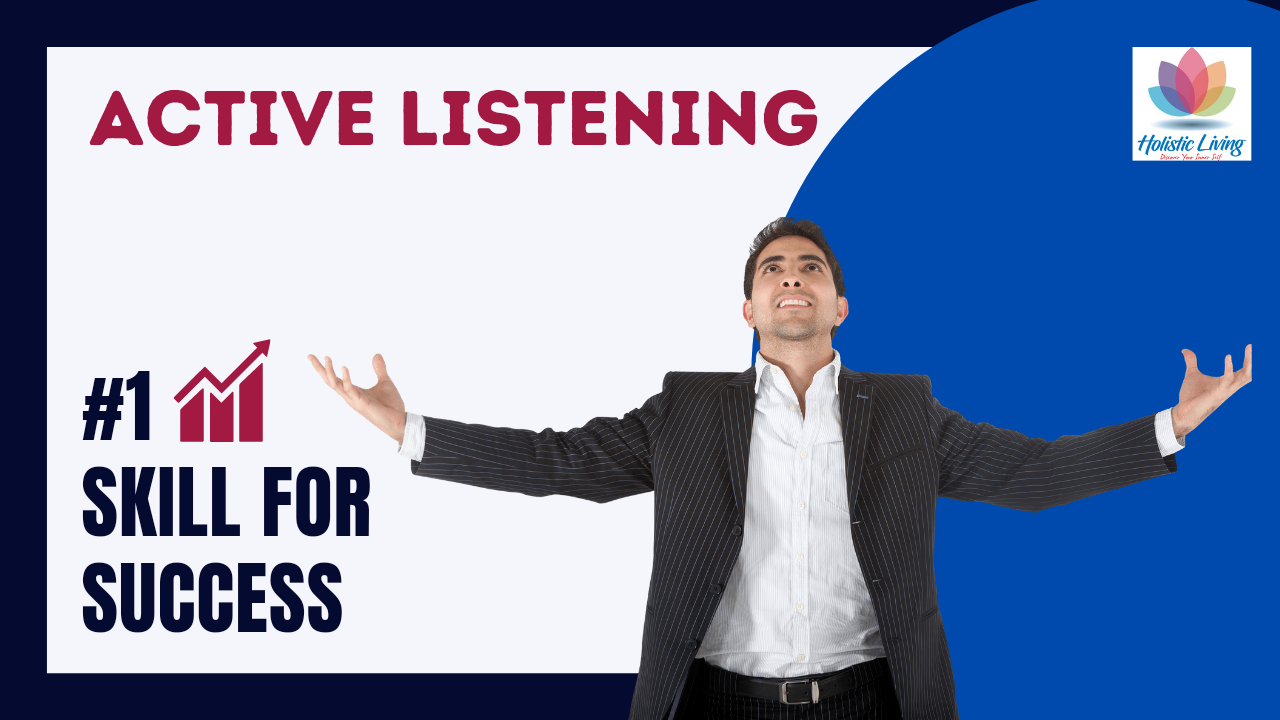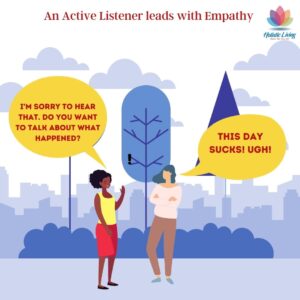Active Listening: The No 1 Skill for Your Success!

Active Listening serves as a powerful tool in achieving success in all the areas of life.
Key Points
- What is Active Listening?
- How will it benefit you?
- How can I practice Active Listening?
- Free Download PDF on examples of Active Listening phrases
Bernard Baruch, a renowned American financer and statesman once said, “Most of the successful people I have known are the ones who do more listening than talking.”
Mr. Baruch here makes a strong point. The skill of listening has a major contribution in achieving success in all areas of your life. So, how does active listening benefit you?
- Effective Leadership
- Work Success
- Fosters better relationships
- Increases social attractiveness
- Allows space for positive growth
This article focuses on understanding what is active listening and getting equipped with some of the techniques that can help build your listening skills.
What is Active Listening?
Active listening is a step further than your usual listening. An active listener not only pays careful attention to the words but also relates to the emotional space of the other person. Active listening involves responding to the other person in a way that encourages them to speak and makes them feel heard and perhaps even understood. This particular form of listening as mentioned above can yield many benefits for you.
Research suggests that 85% of what we have learned is through listening, not talking or reading! Even more interesting is the fact that only 2% of the population has had formal education in how to listen. Considering the given statistics, it is no brainer to gauge the importance of listening. However, most of us are only able to retain only 25% of the information exchanged in a conversation. Educating yourself about active listening skills is one way to increase that percentage.
Therefore, a more important question arises ‘How to become an active listener?’
Non-Judgmental Attitude
One of the biggest barriers to having a free-flowing conversation is forming judgements. Practicing non-judgement can prevent you from making assumptions and allow you to perceive the conversation from the speaker’s point of view which fosters better understanding of what is being conveyed. Hence, active listening involves being aware of one’s own biases and belief systems and consciously refraining from making any judgements. Furthermore, having empathy is a great way to minimize judgements.
Genuine Interest
When you have a genuine interest in the conversation, active listening can feel almost effortless. It is important to understand that following each step of active listening in a robotic fashion is more detrimental to the conversation than it is beneficial. Rather dropping our pretenses and having a keen interest can allow for a more free-flowing conversation.

Non-verbal cues
Body language is an effective way of communication, perhaps, at times even more effective than verbal communication. An active listener provides feedback and shows interest through non-verbal cues such as nodding, leaning towards the listener, maintaining eyes contact and demonstrating appropriate facial expressions. Knowing how and when to use non-verbal cues is strategic to the process of active listening.
Summarizing & Paraphrasing
Summarizing and Paraphrasing are effective tools in the process of active listening. In summarizing, you take the information that the speaker has given you so far and covey the gist of it in your own words. On the other hand, paraphrasing is used to make sure that you have accurately understood the gist of the conversation. For instance, when someone is ranting about how hectic and stressful their week has been then one way to respond effectively would be, ‘I can sense that you have had a hard week and you feel overwhelmed by all the things you had to do, is that right?’.
Asking Questions
Asking open-ended questions such as ‘How do you feel about it?’ or ‘What are your thoughts about it?’ can be a great way to facilitate a conversation and receive maximum information from it. Moreover, follow up questions can be constructive in a way that it challenges old assumptions and provides the reassurance that the listener is not only listening the speaker but also comprehending what they are saying.
Being authentic and transparent while using a combination of these techniques is the biggest hallmark of an active listener.
A great boos in your career success, active listening has proven to maximize your social well-being and increase your social attractiveness wherever you go!
Meanwhile, you can also refer to effective examples of active listening phrases. Download the PDF for free.



